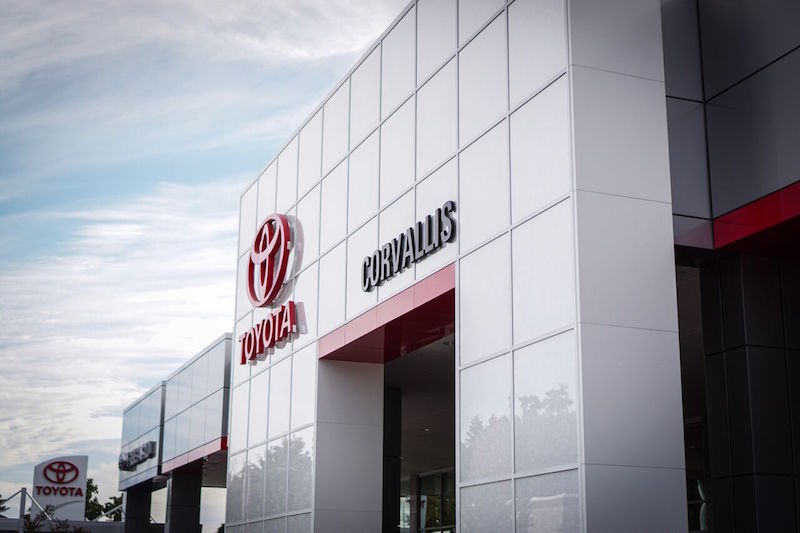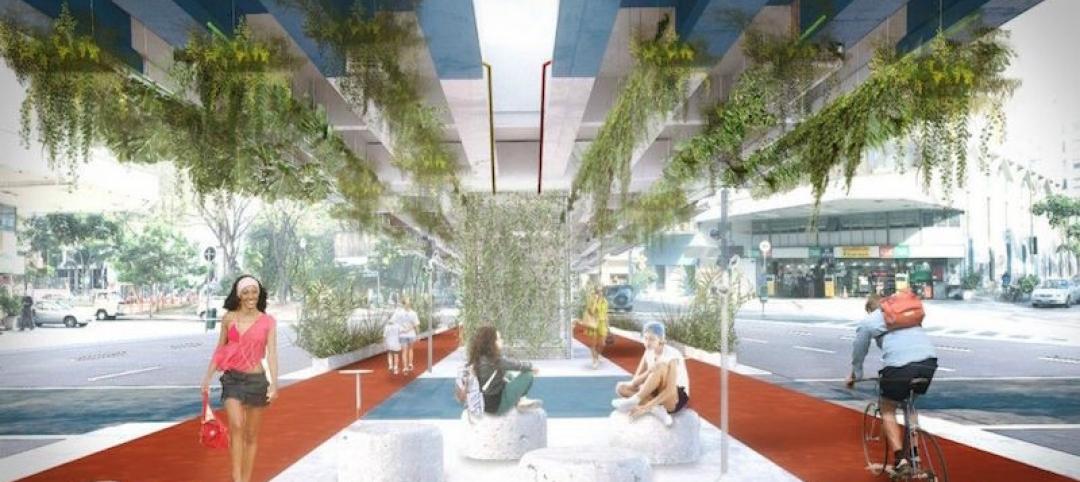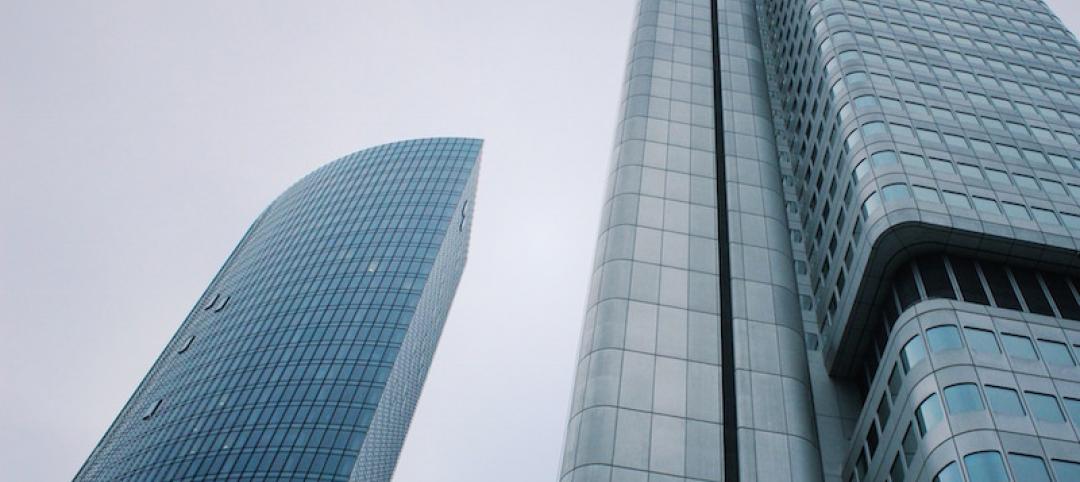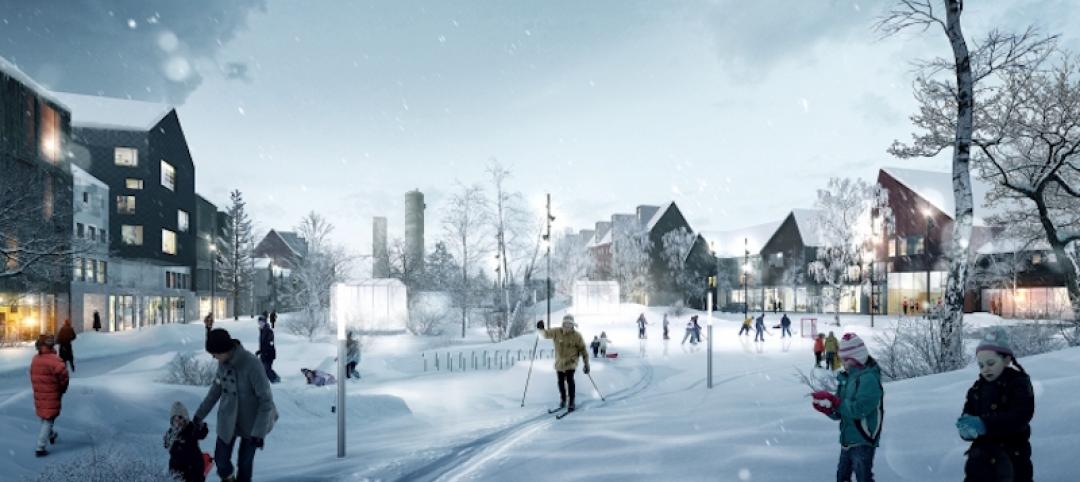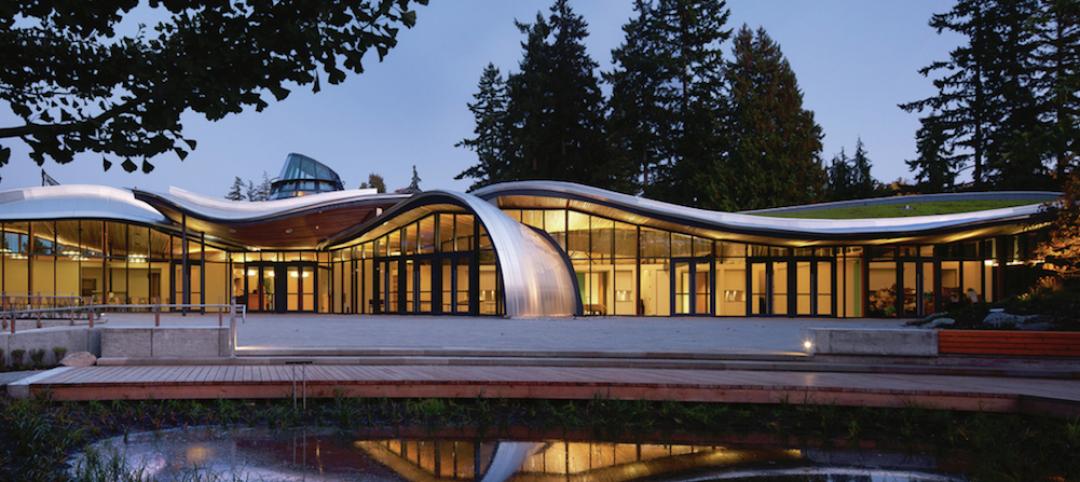Through its use of photovoltaic panels, water harvesting to irrigate the landscape, radiant floor heating, and geothermal heating and cooling, Toyota of Corvallis, in Corvallis, Ore., is looking to become the first net zero energy auto dealership in the world.
A net zero building is one that, at the end of the year, produced more energy than it used. Any excess energy that is harvested is returned directly to the local power grid to help offset local power demands at peak usage periods.
Gensler, the architect of the 34,8000-sf Corvallis facility, will monitor the building and collect data for the next 14 months to ensure the dealership reaches the lofty goal it has set its sights on. In addition to looking to become a certified net zero energy building, the dealership was constructed to adhere to LEED Platinum standards. There are already a few Toyota dealerships around the country with this certification.
The ribbon cutting ceremony for the building occurred in late September and was attended by representatives from both Toyota and Gensler.
"As a design firm committed to constantly raising the bar and leading the charge on the future of sustainable design projects, we are very proud of this project,” says Rick Ferrara, Project Director, Gensler, in a press release. “Not only is Toyota of Corvallis setting a new standard for Toyota, they are leading the industry in a completely new direction."
Related Stories
Green | Aug 29, 2016
Vancouver, B.C., to require zero emissions on new buildings by 2030
No net GHG emissions will be allowed.
Energy Efficiency | Aug 17, 2016
Investor Confidence Project aimed at raising trustworthiness on energy efficiency projects
The new initiative screens projects to see if they are investor-ready.
Sustainability | Aug 4, 2016
S.F. Bay Area voters approve first-of-its-kind tax to fight impact of climate change
The funds from the tax will be used to restore wetlands
Sustainability | Jul 12, 2016
Wellness is the missing link to sustainable real estate value
Healthier and happier employees benefit a company’s bottom line. Paladino senior project manager Divya Natarajan writes that the proof lies within results from the evidence-based WELL Building Standard.
Urban Planning | Jun 9, 2016
Triptyque Architecture designs air-cleansing hanging highway garden in São Paulo
The garden would filter as much as 20% of CO2 emissions while also providing a place for cultural events and community activities.
Sustainability | Jun 8, 2016
New program certifies the performance of existing buildings in the U.S.
BREEAM USA, an offshoot of a program already in place in Europe, aims to ease the point of entry.
Urban Planning | May 31, 2016
The entire Swedish city of Kiruna is being relocated to prevent it from collapsing into underground iron mines
Kiruna, the northernmost city in Sweden, and its 20,000 residents will be moved two miles to the east by 2040.
Green | May 23, 2016
Perkins+Will achieves first Living Building Challenge Certification with Vancouver visitors center
The VanDusen Botanical Garden Visitor Centre was recognized for its use of healthy building materials, on-site renewable resources, and filtered rainwater to meet greywater requirements.
Wood | Apr 29, 2016
Anders Berensson Architects designs 40-story wooden skyscraper for Stockholm
The structure, which will be made entirely out of cross-laminated timber, will rise 436 feet into the air, making it Stockholm’s tallest building.
Sustainability | Apr 20, 2016
5 ways rapid tech growth can drive sustainability leadership in Seattle
Paladino's Nash Emrich writes that Seattle can keep its edge in sustainability by leveraging new energy performance transparency rules, using wellness to attract top tech talent, and embracing innovative commuting options.


